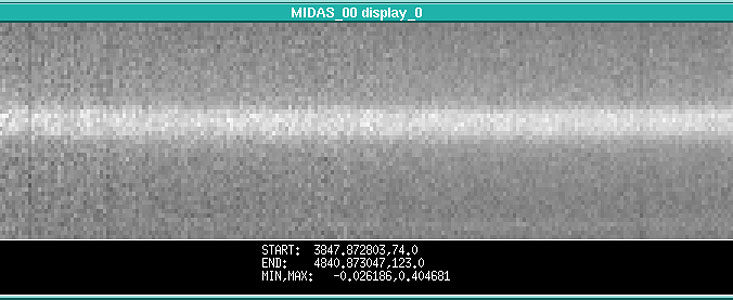Nota de prensa
A Spectrum of Comet Hale-Bopp
11 de Septiembre de 1995
Comet Hale-Bopp is known to possess a bright coma, despite its large distance from the Sun, almost 1,000 million km. Observations have shown that this coma consists of dust particles of different sizes that have been ejected from the comet's nucleus.
But what is causing this outflow of the dust? Most comet specialists believe that a particular gas must act as the "agent". When molecules evaporate from the solids in the nucleus, either due to the heating action of the infalling sunlight, or because of some unknown inner energy-producing mechanism, then they take dust particles along and push them outwards. Although we may not see the gaseous molecules that quickly diffuse into the surrounding space, we do observe the reflection of the sunlight from the much larger, slower moving dust particles.
Astronomers would like to know which gas is responsible for the great amount of dust, now observed around the nucleus of Comet Hale-Bopp. This would also prove the presence of such material in the nucleus.
Comets are believed to consist mostly of water ice (H2O), but the temperature at the present distance from the Sun (~ 125 K, or -150 C) is too low for any considerable amount of water ice to evaporate. Thus water molecules are unlikely to be involved in this process. Cyanic acid (HCN), carbon monoxide (CO) or carbon dioxide (CO2) are more likely candidates.
However, when they lave the nucleus, these molecules are broken down and/or ionized rather quickly by the sunlight and/or the solar wind particles. Their presence may instead be indicated by the detection of CN (radical) and CO+ (ion). Both of these molecules emit radiation in the ultraviolet part of the spectrum; CN at ~ 3883 A (388.3 nm) and CO+ at ~ 4010 and ~ 4260 A, respectively. One way to decide which gas has caused the observed dust outflow is therefore to obtain a spectrum of Comet Hale-Bopp covering this spectral region.
Image eso9524a shows such a spectrum, after it has been subjected to preliminary image processing. It is based on a Hale-Bopp spectrum, obtained in the morning of September 5, 1995, by visiting astronomer Birgitta Nordström (Copenhagen University Observatory, Denmark) with a CCD on the Boller & Chivens spectrograph at the ESO 1.5-metre telescope at La Silla. The exposure lasted 30 minutes and the slit was placed in the East-West direction. Hector Vega (ESO) assisted during this observation.
This file was transmitted together with the calibration files to Heike Rauer (Observatoire de Meudon, Paris, France), who performed a provisional reduction. In this process, the instrument and sky artifacts were removed and the comet spectrum was divided with the spectrum of a G0 star, whose spectrum closely ressembles that of the Sun. This procedure removes as far as possible the contribution from the sunlight reflected of the cometary dust and enhances any surplus emission, for instance from the above mentioned gas molecules.
The spectrum covers the region from about 3848 A (left) to 4841 A (right). The scale is linear and the pixel size in the direction of dispersion is 3 A. A few vertical, dark lines are seen, for instance at 3880, 3933, 3969, 4034 and 4695 A; they are caused by incomplete subtraction of the sky spectrum, recorded simultaneously.
As can be seen, there is no sign of CN and CO+ emission lines at the indicated wavelengths in this spectrum. They would have shown up as white lines, extending above and below the otherwise "flat" spectrum. The sensitivity of this observation was apparently not sufficient to detect such emissions, if present at all. Indeed, this equipment was not optimized for this particular kind of observation which was made in the course of another observing programme, concerned with galactic stars of low metal abundance.
This negative result may be interpreted in several ways. Either there has always been very little gas of this type in Comet Hale-Bopp and another, so far unknown agent is active, or the gaseous outflow has stopped in the meantime. Other observations are needed to cast more light on this question.
eso9524a may be reproduced, if credit is given to the European Southern Observatory.
Acerca de la nota de prensa
| Nota de prensa No.: | eso9524 |
| Legacy ID: | Photo 27/95 |
| Nombre: | Comet Hale-Bopp, Spectrum |
| Tipo: | Solar System Solar System : Interplanetary Body : Comet |
| Facility: | ESO 1.52-metre telescope |
| Instruments: | Boller and Chivens Spectrograph |

